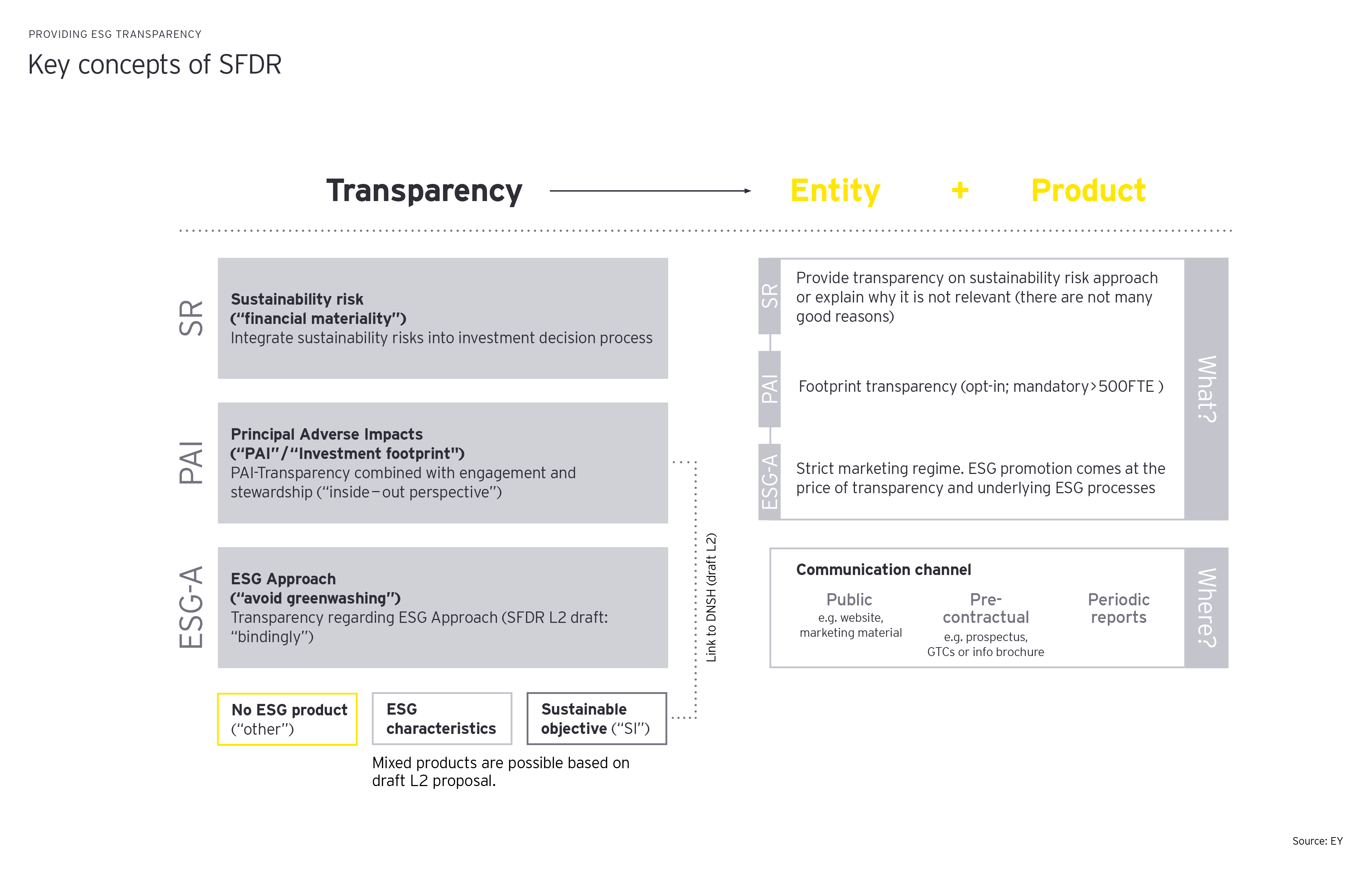The 10 key action points of the EU Action Plan ultimately aim to reorient capital flows towards a more sustainable economy, foster long-termism and manage the increasing importance of sustainability risks. Given the quick-paced EU developments, Swiss ESG market players cannot assume that leading today will necessarily mean leading tomorrow
ESG approach positioning – positive impact (if any)
The ESG market includes a broad variety of ESG approaches (e.g. exclusions, norms-based screening, best-in-class, ESG integration, thematic and impact related approaches). While not all of them necessarily lead to a positive ESG contribution or exclude unsustainable companies, the main rationale for providing transparency about the underlying ESG approaches is to prevent misleading the investor and, therefore, also reduce the prevalence of “greenwashing”. This aligns with the new strict marketing regime of the EU Action Plan where promotion of ESG will only come at the price of transparency (and underlying internal ESG governance and processes).
The concrete disclosures required, as well as their form, channel and periodicity, depend on the type of product and some special features (e.g. use of an index or carbon emission reduction objective). It is, therefore, crucially important to classify the different types of products (product by product). Currently, debate about the exact lines to be drawn between the different product categories has not yet been concluded. Considering the tight deadlines in March 2021, the finalization of the draft RTS due in Q1 2021 will hardly leave enough time for implementation if entities are not prepared.
The SFDR makes a clear distinction between financial products that have sustainable investments as their objective (SFDR Art. 9 products) and financial products that promote, among other characteristics, environmental or social characteristics (SFDR Art. 8 products). The ESAs draft RTS diluted this concept somewhat with the introduction of a mixed type of SFDR Art. 8 product where only part of the investment is sustainable. In addition, the ESAs proposed that any sustainable investment must satisfy the Do No Significant Harm (DNSH) test by referring to the adverse impact indicators developed in the draft RTS.
There is also no clear line drawn between the two ESG products (SFDR Art. 8 and 9 products) and other financial products. The ESAs suggest in their draft RTS that the promotion of ESG should be limited in some way and that the industry should not “over disclose” on ESG. For this reason, they have come up with a vague concept that only products with underlying assets based on “binding” selection criteria should be promotable as ESG products (e.g. SFDR Art. 8 or 9 products). The French regulator AMF has taken a slightly different and stricter approach and asks for percentage limitations of the investment universe and a minimum percentage of assets to be screened according to the methodology if ESG is made a key part of communication (e.g. in the KIID or marketing material). The outcome of this debate will be highly relevant to position the financial products accordingly. Even if SFDR Art. 8 should end up being a catch-all category (also including pure sustainability risk integration approaches), ESG should still be used more cautiously as a marketing factor since the reputational risk of greenwashing exists independent of the concrete underlying regulation.
Strict marketing regime
In accordance with the new regime introduced by the SFDR, asset managers must review their marketing materials, pre-contractual (e.g., prospectus) and website disclosures in respect of the three topics summarized above that will be applicable after 10 March 2021. In addition, they will also need to implement product and marketing approval and maintenance processes to continuously monitor compliance with these disclosure requirements.
Summary
Financial market participants should closely observe changes across international and local sustainable finance legislation in order to offer leading – and fully compliant – products and services in the short-, medium- and long- term future. Given the quick-paced EU developments, ESG market players cannot assume that leading today will necessarily mean leading tomorrow. The first implementation timelines of the EU Action Plan are quickly approaching with several sets of regulatory waves to follow. It is time to start paddling.



